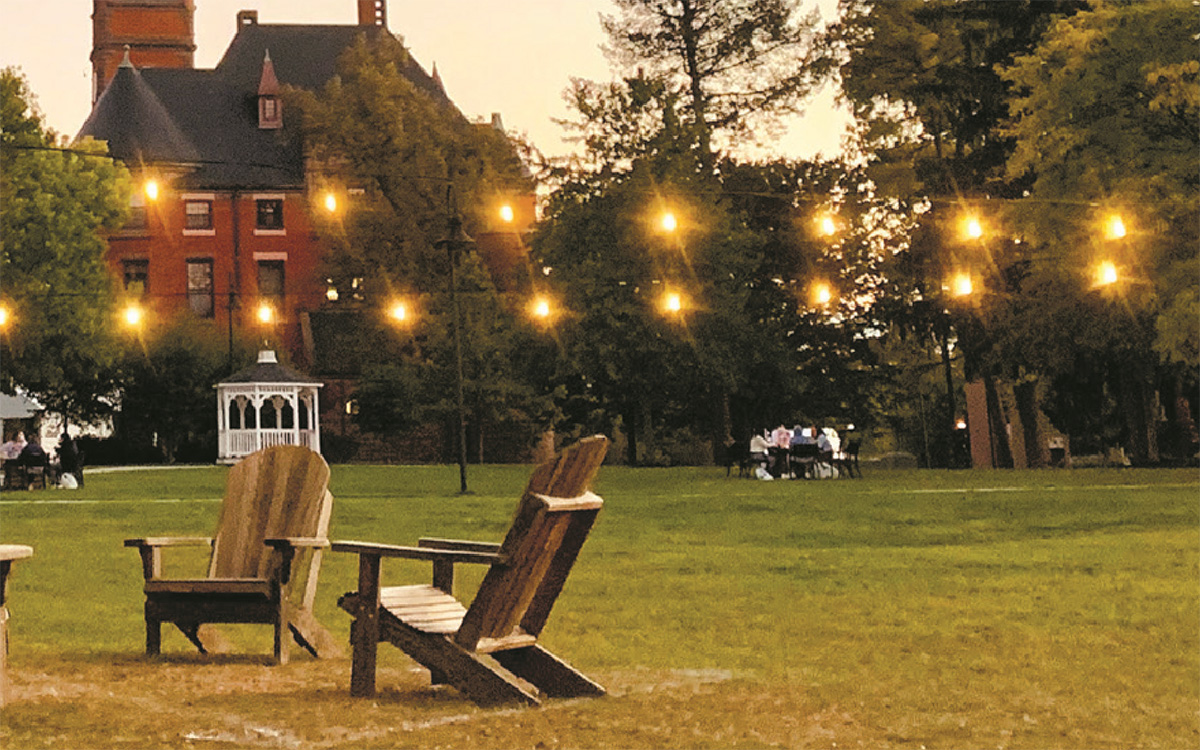
When Pennsylvania College grew to 98 students “without a house to put them in,” Thaddeus Stevens, a member of the Pennsylvania House of Representatives, argued in favor of an 1834 bill that would fund the construction of Pennsylvania Hall—the home the College needed to sustain its expanding community. Built in 1837, in the Doric style of Greek architecture, the edifice sat on land provided by Stevens and housed students and College presidents, as well as a library, chapel, dining hall, classrooms, and other gathering spaces. It quickly became the “center of College activities,” History Prof. Charles H. Glatfelter ’46 later wrote. Affectionately known as “Old Dorm,” Penn Hall was, and still is, a symbol of the community’s spirit—of traditions and social life for Gettysburgians past and present, according to the 1931 Alumni Bulletin.
Today, Gettysburg College continues to foster that community by designing intentional spaces where students can build connections and grow their knowledge and enduring skills. While each space is unique, extending beyond classroom walls and into common spaces like the library and athletic fields, a common thread of bringing Gettysburgians together connects them all.
“It’s always great to see a campus respond dynamically to the needs of the students and to provide opportunities that continue to further its core mission,” said AICP-certified planner Maggie Dobbs ’08, an assistant township manager and director of planning and zoning for New Hanover Township, Pennsylvania. “It’s always a juxtaposition between the old and the new—how do you embrace the change, and how do you adapt to modern needs and wants, while preserving that heritage and history?”
Blending form and function
Penn Hall has remained integral to student life, from Gettysburg’s earliest graduates to the most recent Class of 2024, where the time-honored traditions of Convocation and Commencement bookend their time on campus. As centuries passed, the College expanded greatly, now encompassing 225 acres that constantly evolve to support students’ needs.
In 1959, the College Union Building (CUB) opened as the new central spot for students, complete with a ballroom, barber shop, bookstore, bowling alley, snack shop, radio station, and swimming pool. In 2018, the addition of the Janet Morgan Riggs Student Center, named in honor of President Emerita Janet Morgan Riggs ’77, brought more intentional spaces for students to gather, like The Junction, an open space for both studying and performing where the bowling lanes once stood. Four years later, students helped the College envision new spaces in the CUB, such as an area for commuters.
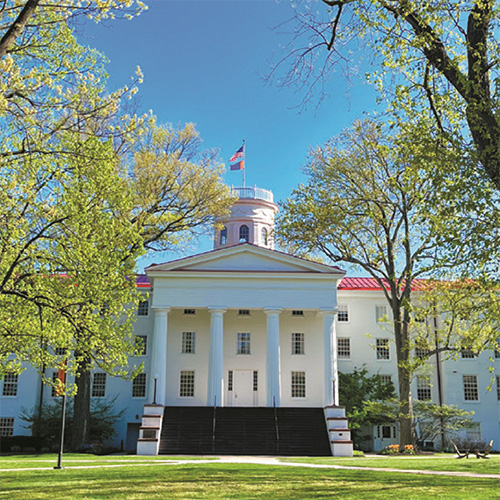

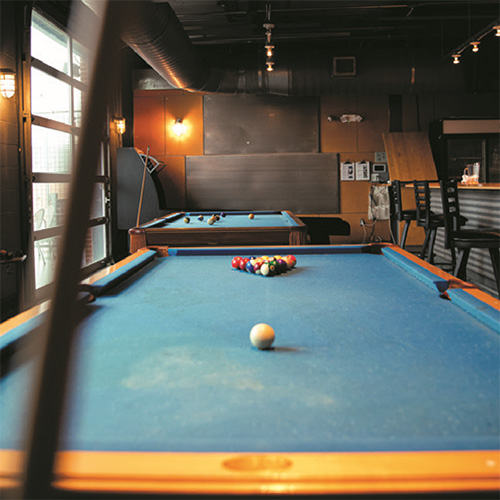
“We took student feedback and expanded on it significantly,” said Jon Allen, director of student activities and Greek life. “We converted the game room into a student lounge with resources for commuters and moved the games into the lobby. This included the addition of a digital board game table, video game consoles, and a foosball table to go with the existing pool table and other games.”
In 2023, a Social Venues Taskforce, led by Vice President for College Life Anne Ehrlich, then reimagined The Attic as a 24/7 social space with a Skee-Ball machine and pool tables, as well as the basement of Plank Gymnasium as a hub for student activities with a creativity lounge, e-sports room, arcade room, and art desks.
“We have been successful in finding another way to help students build community with each other so they can have the memorable experience with their friends we all want them to have,” Allen added.
Additional student feedback during the COVID-19 pandemic led to a renaissance on Stine Lake, a grassy common area that frequently flooded before the construction of Musselman Library in 1981. With students craving connections, picnic tables, fire pits, orange and blue Adirondack chairs, and string lighting were added to encourage outside gatherings.
“The additions were so popular that the next summer they became permanent,” said Associate Vice President of Facilities Planning & Management Jim Biesecker P’22.
The ability to freely move Adirondack chairs, which students do every day, is rooted in a concept developed by sociologist William Whyte, who analyzed human behavior in public spaces, Dobbs said. It reminds her of a class she took her senior year about land use planning, which explored “the intersection of the built and the natural world” and how both human and environmental needs influence design.
“He wrote this book all about public spaces and how barren public spaces can be if you don’t provide people a place to sit,” she explained. “The fact that they were not fixed in place, little things like that, if you just provide people an opportunity to be creative about things that they can engage with, they utilize them in all sorts of ways that maximize the function and utility.”
That convergence also plays a role when considering public and private spaces on campus, such as the steps of Musselman Library.
“The intersection of the public and private sphere typically comes into play with front porches,” Dobbs continued. “Front porches are a really great way for someone to be in their private sphere of their home but also open to the public sphere of the sidewalk. … Looking back, I always thought the library steps served as that public-private sphere, where a friend walks by, they’re coming in or out of the library, and you just stop to catch up.”
Finding comfort and camaraderie
Whether it’s a cluster of Adirondack chairs outside Penn Hall or the top of the climbing wall overlooking campus, every student finds their favorite space at Gettysburg College to build their own community, thanks to the care that goes into each design.
“When you’re on a team designing a space, working with an architect, I’ve always appreciated all the nooks and crannies you could find,” said Dobbs. “From a collegiate standpoint, those areas really create opportunities for people to have a space to call their own and feel that sense of safety, home, and belonging. … The spaces I engaged with at Gettysburg, and the spaces that I’ve seen built since on my returns to campus, have just been open and inviting. I never see spaces where people don’t exist, which means the design is working.”
With a “mishmash” of furniture on the lower level of Musselman Library, from moveable tables to whiteboards with wheels designed to encourage camaraderie, students can configure their own spaces. Robin Wagner P’10, dean of the library, is especially excited about the library’s renovated Browsing Room.
“It has been reimagined with comfortable chairs, big tables, an array of board games and jigsaw puzzles, and a new collection of vinyl records with a turntable and headphones,” said Wagner. “Students build the spaces that give them comfort.”

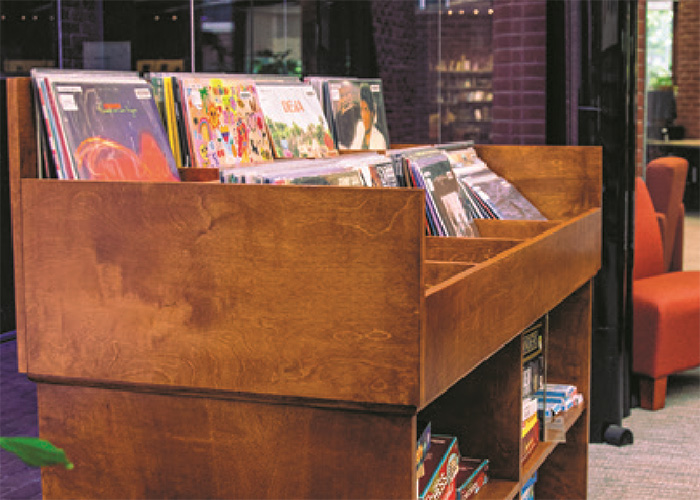

The library also offers students a break from their studies when its Apse transforms into a music hall for the popular Notes at Noon concert series and a gathering space for trivia night and student club activities.
Across campus, students are also supported in the new Donna Jean Brogan Center for Quantitative Learning, which opened last fall in the lower level of Glatfelter Hall. Funded by Donna Brogan ’60 and a grant from the George I. Alden Trust, the center provides students with a spacious and accessible 24-hour hub for quantitative learning. With wheels on furniture and whiteboards for tables, this functional space invites collaboration.
“It’s a small change going from a static table to a table with wheels,” said Dobbs, “but it really opens up opportunities for collaboration that utilizes people’s creativity to design their own spaces to function for their particular purpose, and it can then be repurposed.”
The space has since welcomed many peer tutoring sessions, including with mathematics major and chemistry minor Ally Pancerella ’25.
“The comfortable environment is a great opportunity to get out of the traditional classroom setting and work together with your peers,” Pancerella said.
In the John F. Jaeger Center for Athletics, Recreation, and Fitness, which opened in 2009 and was later named in honor of Honorary Life Trustee John F. Jaeger ’65, Colin Goodwin ’26 also offers encouragement to his peers as the Climbing Club’s outgoing president and a campus recreation coordinator at The Den. The Den, which is comprised of a climbing wall, donated by Ron ’72 and Diane Werley ’73 Smith, and bouldering wall donated by David Sites ’77, is visible from the outdoors through the Jaeger Center’s intentional glass structure and soaring ceilings, which resemble the iconic Matterhorn climbing region in the Swiss Alps. It’s a stark difference from the College’s earlier athletic facilities, including Linnaean Hall, which was originally built to be a science center before it transformed into a gym in 1890.
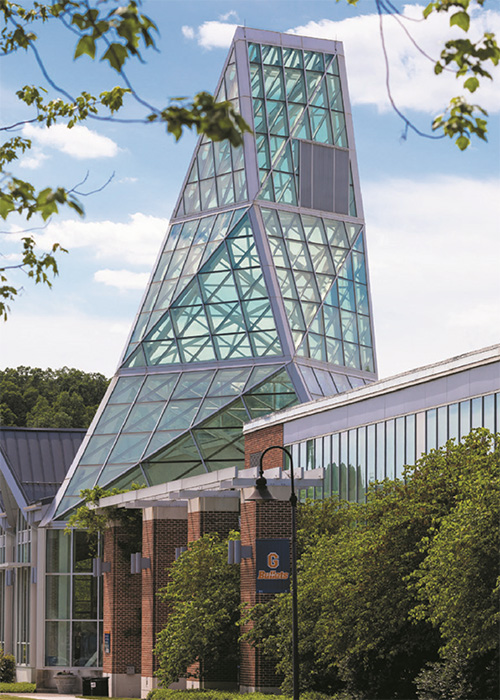
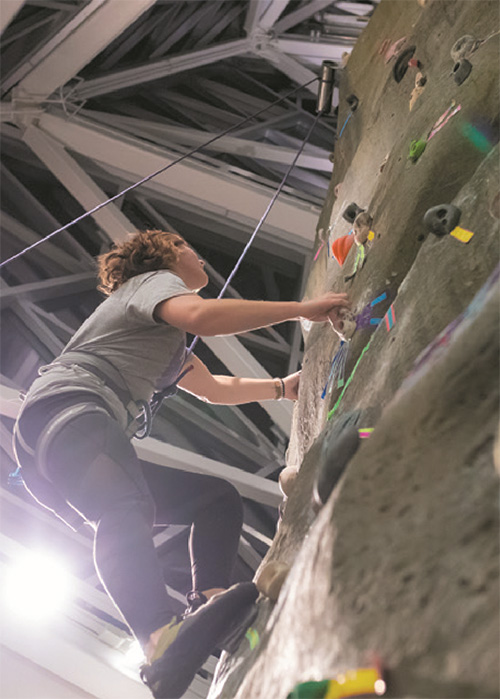
“The glass spire is something you can see from all across campus and town,” said Goodwin. “Because it is such an open space, it can be a common occurrence that, while people are climbing on the tower, their friends will see them while walking by, come into the gym, and cheer them on. While I think that can initially be intimidating to people, the openness of the space creates curiosity about climbing and hopefully invites them into the space.”
Similarly, the surface of the climbing walls were designed to mirror that of the boulders at Devil’s Den, Little Round Top, and Big Round Top on the nearby battlefields.
“To people who know the historic battles that took place around those boulders on the battlefield, these interior walls are a reminder of the place we occupy geologically and historically,” added Major Gifts Officer Dan Yates, the club’s advisor. “The community grows itself through this camaraderie of efforts, stewardship of the places we climb and grow to love, and the belief that one person’s struggle feels just as hard as another person’s.”
Next fall, the community will also be able to enjoy night games together, thanks to lights that will be installed at Musselman Stadium this summer, which was made possible by donations from more than 25 Gettysburg alumni and families.
“Building and nurturing community has long been a core value, if not the core value, of Gettysburg College,” said Robert Bruns ’88, who played lacrosse at Gettysburg. “To see so many alumni, even generations after they attended, rally around the lights project with such generous donations is a testament to the arguably unmatched community of Gettysburg College.”
From 19th-century buildings to the modern Jaeger Center, each era of change on campus is striking to the eye—but in a purposeful way to serve its students. Design with community-building in mind is “a movement,” said Biesecker, and it will continue to be a central part of all design projects at Gettysburg College. “It’s all about making sure what you create is inviting, so people crave that destination.”
“That’s really beautiful to see because a community is not just a place in time,” Dobbs added. “A community is dynamic. It’s always evolving, and the older structures develop this patina over time and really create that sense of place, which is a term we use very often in community planning. It’s that je ne sais quoi of a place. You can’t necessarily put your finger on it, but you know it when you feel it.”
by Alex J. Hayes and Megan Miller
Posted: 07/02/24